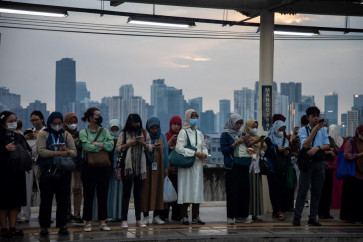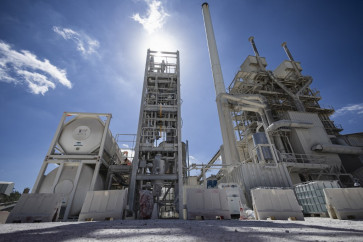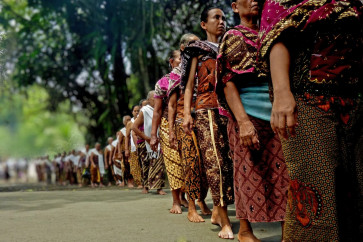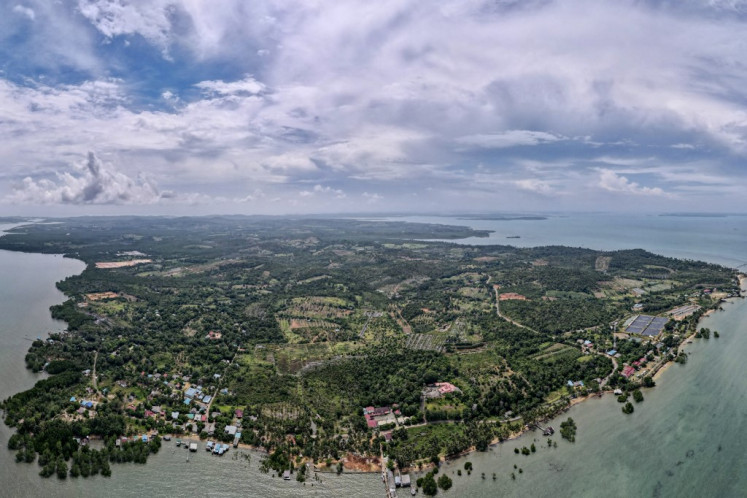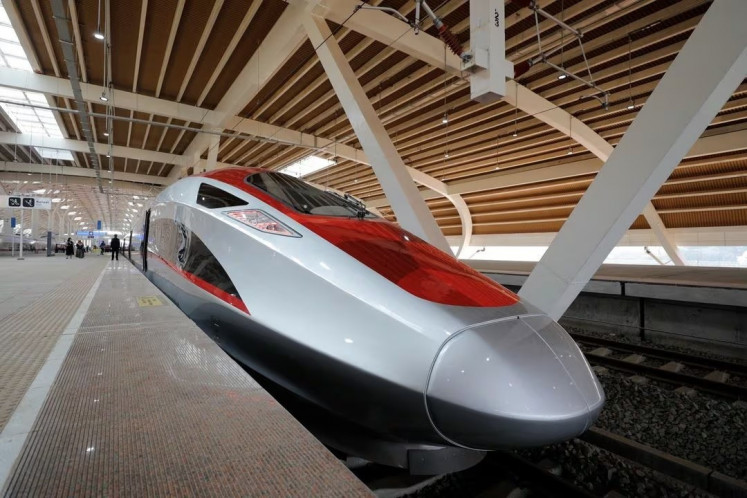Popular Reads
Top Results
Can't find what you're looking for?
View all search resultsPopular Reads
Top Results
Can't find what you're looking for?
View all search resultsA Melting Pot in the southern hemisphere
Singapore Airlines launched a new route connecting Asia and Latin America – Singapore-São Paulo via Barcelona — on March 28
Change text size
Gift Premium Articles
to Anyone
S
ingapore Airlines launched a new route connecting Asia and Latin America – Singapore-São Paulo via Barcelona — on March 28. Brazil’s booming economy has become an attraction for Asian as well as European countries. Singapore Airlines, in cooperation with ground partner Accor management, hosted a group of Southeast Asian and Spanish journalists, including The Jakarta Post’s Primastuti Handayani, to offer them a glimpse of Brazil’s major cities, São Paulo and Rio de Janeiro. Below is her report.
Touching down at Guarulhos International Airport in São Paulo– the largest city in the southern hemisphere – I immediately sensed the modernity of the metropolis.
It is not easy to describe São Paulo as it is rich in culture and architecture, hyped as the latest fashion and gastronomic capital, and is the financial center of Brazil.
It is very easy to spot the commercial districts of São Paulo. Rows of skyscrapers along Paulista Avenue and São Paulo’s central square, two of the city’s five business districts, are just an example.
The central square is home to the BM&F Bovespa — the largest stock exchange in Latin America where about R$6 billion (US$ 3.8 billion) in shares are traded every day.
Another sign of São Paulo’s strong economy are the traffic jams.
With more than 7 million vehicles registered as of March, according to the city’s transportation department, lines of vehicles can be seen in the city’s streets. To deal with gridlock, businessmen and other executives in the city opt for air taxis.
The British newspaper the Guardian reported in 2008 that there were 462 private helicopters and around 70,000 flights per year within central São Paulo. Seeing helicopters flitting about is a common sight when you’re in town.
But São Paulo is not only about business and money. The city regularly hosts the São Paulo Art Biennial , São Paulo Fashion Week, São Paulo Gay Pride Parade and an F1 race. Museums are scattered across the city, mixing beauty with stunning architecture.
A tight schedule only allowed us to visit three museums — the Museum of Art São Paulo (MASP) on Paulista Avenue; the Pinacoteca — the city’s oldest art museum with a collection of about 5,000 works of arts; and the Football Museum, located beneath the spectators’ seats at the Estadio do Pacaembu.
What makes the Football Museum interesting was a short movie – approximately two minutes long – depicting Brazil’s loss to Uruguay in the 1950 World Cup final at Maracana Stadium in Rio de Janeiro.
São Paulo also has many big parks, such as Ibirapuera and Triano.
Ibirapuera Park, located near the Pullman Ibirapuera hotel where we stayed, is often compared to New York’s Central Park.
It was inaugurated in 1954 to mark the city’s 400th anniversary, with buildings designed by famous architect Oscar Niemeyer and landscape by designer Roberto Burle Marx.
The 2-square-kilometer park hosts, among other things, the city’s Modern Art Museum, its planetarium and a Japanese pavilion.
The Triano Park — just across from the MASP — resembles a miniature Amazon forests and features lots of chairs where people can easily sit and chat or have a little nap.
After getting enough fresh air at Triano Park, we went to the Livraria Cultura, a gigantic bookstore that spoiled us with its collection of books, magazines, CDs and DVDs.
Shoppers should go straight to Oscar Freire Street where top-notch world designers have their luxurious boutiques.
There are also rows of stores of Brazilian designers, including the famous flip-flop producer Havaianas
and jelly shoes maker Melissa.
Security guards had to close the doors to would-be customers at both stores since they were full to capacity when we visited.
In the nearby Jardins area, a row of restaurants and dining places were ready to serve us different kinds of cuisine — mostly with French influences.
If you are not into haute cusine, try the Mercado Municipal (municipal market). The two-story market has a lot to offer, from dried fish, tropical fruits, chocolates and coffee on the first floor and a row of cafes on the second floor.
Our tour guide, Rosana M. Ribeiro, brought us to a fruit kiosk where the attendants allowed us to taste different kinds of tropical fruits — some which were available also in Indonesia — such as mangosteen and passion fruit.
For lunch, pastel de bacalhau (a fried codfish turnover) or a pastel filled with shrimp and cheese from a cafe really hit the spot.
Exploring the Benedito Calixto street market was another experience. We saw numerous antiques, from watches, cutlery and chandeliers to new items, such as bags and handicrafts for children.
Strolling along São Paulo is not complete without a walking tour of the gold town where the Cathedral and the Sao Bento church are located.
Between the two churches, we spotted an interesting place called Pele Arena. Yes, soccer’s living legend, Pele — who helped Brazil won the World Cup in 1958, 1962 and 1970 — is one of the shareholders of the cafe whose interior is dominated by soccer.
While other major cities may have a Chinatown, São Paulo has a Japantown.
According to Rosana, a flurry of Japanese arrived in 1908 — when coffee was Brazil’s main export — and marked the start of Japanese immigrants in the nation. According to Japan’s foreign ministry, there were an estimated 1.5 million people of Japanese descent in Brazil as of 2009.
Today, there are numerous Japanese stores and restaurants in the Japantown located at Liberdade. They sell Brazilian souvenirs from T-shirt, semi-precious stones and even Japanese products. You can see some buildings depicting the Japanese architecture in the area.
With plenty to offer, São Paulo is a festival for the senses. Make sure that you have enough time to enjoy it all.


